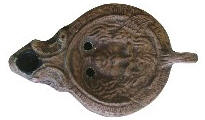1. Draw the following chart in your book or folder and the write out the points.
|
|
Historians |
Archaeologists |
|
|
2. Write out the following sentences, and then write in the missing word for each sentence. The missing word will be either : 'historians' or 'archaeologist'.
| a) The literary sources (primary sources documents)
that ___________ study from ancient times, were mostly written by
men. b) ___________ need to keep in mind, that these ancient written sources were also written by wealthy men, from the upper class in their society. c) These ancient documents mostly describe important people or events from that time, rarely do they describe things like what children did for entertainment, or what they ate for breakfast! This is where we need a good _______________, to find and analyse artefacts from the ancient society being studied. |
|||
|
|||
| 5. Test your skills as an archaeologist
with this
simulation of an archaeological dig
. |
|||
www.interactive-learning.com.au

